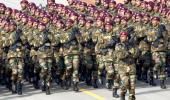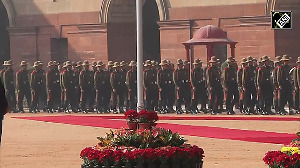The best available recourse to keep the defence sector healthy is to source most of our requirement within the country so that procurement outlays under both the Revenue and Capital heads flow within the country, recommends Brigadier S K Chatterji (retd).
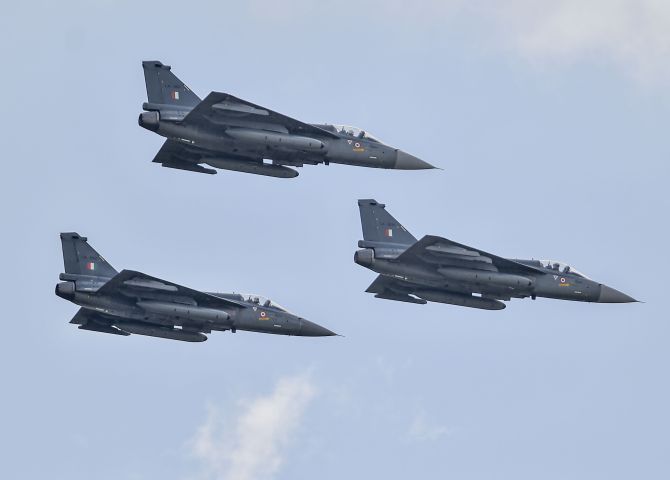
COVID-19 has had an unambiguous impact on the Indian defence forces. The establishment cannot afford to ignore it.
Under the circumstances -- whereas Reserve Bank of India Governor Shaktikanta Das stated on May 22 that GDP growth in FY21 is expected to remain in 'negative' territory -- with millions of job losses and disruptions in business activities -- there is no room to hike military expenditure.
The best available recourse to keep the sector healthy is to source most of our requirement within the country so that procurement outlays under both the Revenue and Capital heads flow within the country.
Side by side, the necessity is to channelise a major portion of this expenditure to the private sector, thereby boosting their capabilities and also our indigenisation, simultaneously.
The government has already taken a few policy decisions and amended procurement procedures to favour indigenisation in acquisition, maintenance and repair modalities, issuance of list of products where only Indian vendors can pitch in, and the like.
It signals a change in our approach to defence procurement.
Put together, they open up the market to Indian manufacturers and service providers and would channelise a substantial amount of the defence spending to Indian industry.
The immediate advantage that the covid crisis has provided to the defence industry was manufacturing a host of equipment that were urgently required.
Several defence PSUs are manufacturing ventilators, sanitisers, PPEs, coveralls and masks.
Some of the products made by the private industries include full face shield masks, N99 masks, bio-suits, personnel sanitisation enclosures, portable backpack sanitisers, PPEs, trolley mounted large area sanitisers, ventilators, solenoid and proportional valve for ventilators, differential pressure sensor, etc.
These are not essentially military equipment, but have some bearing on the stressed financial straits of the Indian defence industry.
Turning the focus on defence products, the government had already notified a list of 126 items where preference had to be given to Indian manufacturers.
Out of these, Finance Minister Nirmala Sitharaman has confirmed a list of 26 items that will be purchased only from Indian industry.
The items have been nominated and the list issued vide a defence ministry notification.
The instructions are applicable irrespective of purchase value, as long as they meet the minimum local content criteria.
The FM in her announcements of the economic package has dwelt on the defence industry in detail.
One of the major steps announced was the creation of a separate budget head for domestic capital procurement.
Apparently, with no major boost in defence allocation expected, such an allotment will be scraped out of the Capital budget as such.
However, it provides greater 'predictability' to domestic manufacturers and could enhance capital investment by industry players.
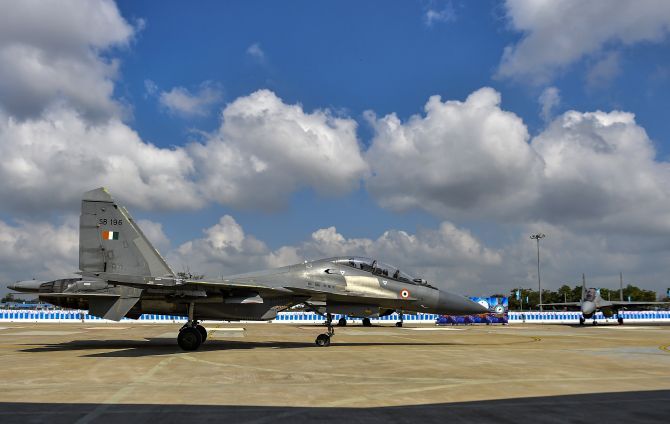
The government has also announced a negative list of weapons being drawn up that will not be procured ex imports.
The list will be drawn in consultation with the department of military affairs.
It is pertinent to state here that we have attained fairly high standards in production of certain systems like artillery guns, air defence missile systems, certain specific categories of helicopters and light fighter aircraft, naval platforms, optical sights, communication networks, etc.
In terms of sub systems and systems, a fair number of Original Equipment Manufacturers have joint ventures with leading Indian defence companies for sourcing their requirements.
The government will raise the limit of foreign direct investment to 74 percent through the automatic route.
The current 49 per cent automatic route limit has failed to draw major investments.
While assessing the net effect of raising it to 74 per cent, it needs to be stated that FDI up to 100 per cent is allowed even now with approval.
However, a wait and watch stance may be more prudent at this stage.
The FM has announced the corporatisation of the Ordnance Factory Board.
With 50 ordnance factories under the OFB, it's a huge asset that has been a laggard since inception.
The FM was specific, that it wasn't privatisation but corporatisation.
The establishment would be run like public sector undertakings. Fifteen OFB units will be corporatised in the first phase.
Overall, the step should give the OFs more autonomy, while enforcing greater accountability.
The shares of the OFs would be listed on the bourses, thus bringing in greater transparency in their functioning.
The workers unions of these establishments have already threatened to go on strike.
The way ahead is not easy, but a determined thrust could lead to a more profitable restructuring of the OFB.
Hopefully, the plan will be executed and followed up in due course for privatisation.
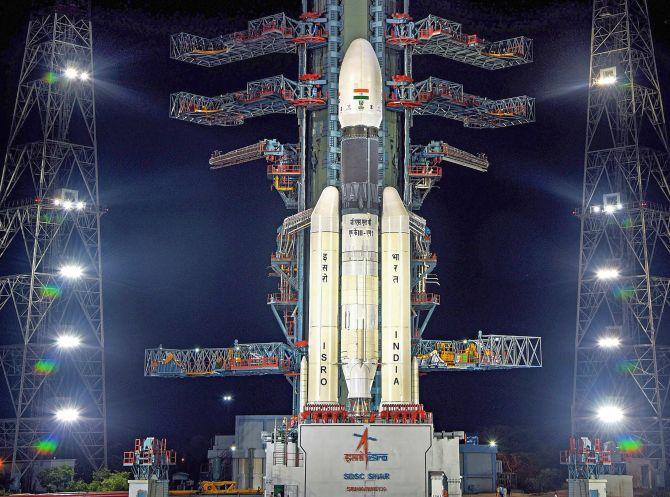
In a larger framework, the government has decided to give a technology push to private sector participation in defence and space sectors.
The government is also trying to redraw airspace management in a big way.
Though it has no monetary significance for the armed forces, it has implications for their training.
Currently, roughly 40 per cent of the airspace is unavailable for civil use, leading to airlines having to use circuitous routes and thus incurring additional expenditures.
The issue is being deliberated upon and a savings of up to Rs 1,000 crores is expected annually; all to the benefit of our reeling airlines industry.
The indigenous production of spare parts of foreign manufactured equipment is another thrust area of the government.
We have repeatedly faced occasions in the past when non-availability of spare parts ex-imports has led to low serviceability and operational effectiveness.
Dependence on foreign markets for spare parts could prove to be a handicap if our forces are required to mobilise at short notice when faced with a threat.
Spare parts are also a long term user requirement, thereby justifying investments by the industry.
Most sophisticated defence platforms have long in-service life cycles, with increasing need for spare parts as they age.
India and Saudi Arabia have been competing with each other for the tag of being the highest defence importer, globally.
The Indian defence establishment is also into a modernisation spree, spurred by increasing threat from the neighbourhood.
The Chinese virus has not resulted in China pressing a pause button either along the land borders or in the Indo-Pacific.
The Pakistanis are even using infected mujahids to carry the virus into the Kashmir valley.
Under the circumstance, with perhaps no boost expected from the treasury, we need to get the best out of every buck we can muster.
Production: Aslam Hunani/Rediff.com



